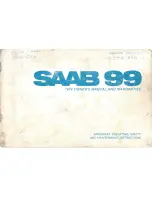
cruise control will resume speed regulation back
to the stored speed.
Cruise control is operated using the correspond‐
ing steering wheel buttons. You can store any
speed above 15 mph (20 km/h) up to the maxi‐
mum speed.
If you fail to adapt your driving style, cruise con‐
trol can neither reduce the risk of an accident
nor override the laws of physics. It cannot take
into account road, weather or traffic conditions.
Cruise control is only an aid. You are responsible
for the distance to the vehicle in front, for vehi‐
cle speed, for braking in good time and for stay‐
ing in your lane.
Displays on the multifunction display
The status of cruise control and the stored
speed are shown in the multifunction display.
1
Cruise control is selected
2
Speed is saved, cruise control is deactivated
3
Speed is saved, cruise control is activated
%
The segments between the stored speed and
the end of the segment display light up in
the speedometer.
System limitations
Cruise control may be unable to maintain the
stored speed on uphill gradients. The stored
speed is resumed when the gradient evens out.
Change into a lower gear in good time on long
and steep downhill gradients. Take particular
note of this when driving a laden vehicle. By
doing so, you will make use of the engine's brak‐
ing effect. This relieves the load on the brake
system and prevents the brakes from overheat‐
ing and wearing too quickly.
Do not use cruise control in the following situa‐
tions:
R
In traffic situations which require frequent
changes of speed, e.g. in heavy traffic, on
winding roads.
R
On slippery roads. Accelerating can cause
the drive wheels to lose traction and the
vehicle could then skid.
R
If you are driving when visibility is poor.
Operating cruise control
&
WARNING Risk of accident due to stored
speed
If you call up the stored speed and this is
lower than your current speed, the vehicle
decelerates.
#
Take into account the traffic situation
before calling up the stored speed.
Driving and parking 201
















































